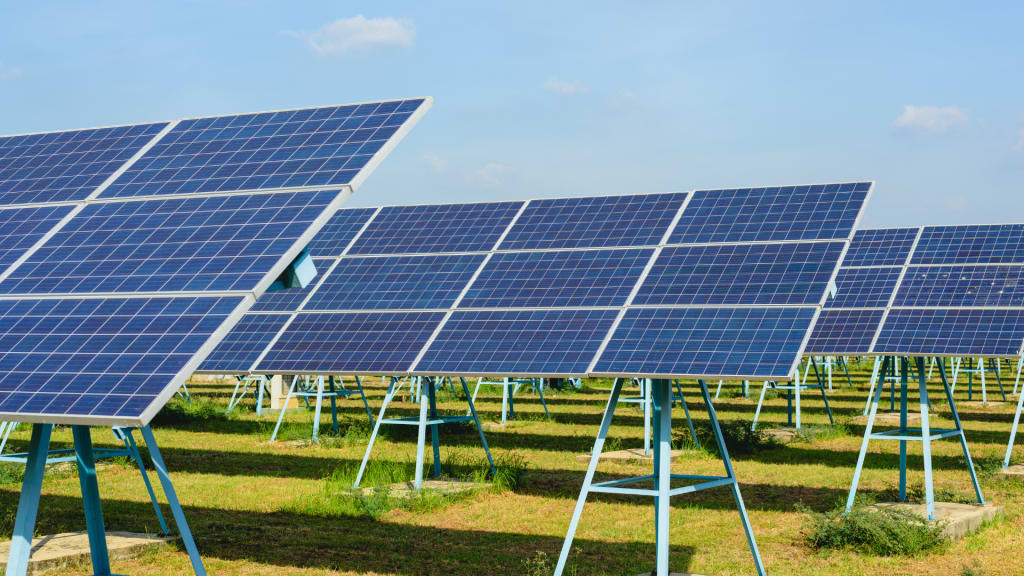Navigating the Challenges of Renewable Energy
Renewable Realities

In a recent speech, the United Nations Climate Change Executive Secretary Simon Stiell said the "following two years are essential in saving our planet." Record-breaking heat, lack of water, and other environmental issues are regular headlines in the context of the need to accomplish improvement, increase employment, and decrease poverty and inequality, among others. However, the linkages between the pathways of advancement, sustainability, and environmental change mitigation are far from well understood. Our ongoing models of development drive greenhouse gas (GHG) emissions are sustainable and inequitable. Although India intends to accomplish Net Zero GHG emissions by 2070, mainly led by a massive change to large-scale renewable energy, the implications of such progress on developmental or sustainability results are unclear at the neighborhood and national levels.
Analyzing solar parks
Allow us to take the case of large-scale solar parks — a key pillar of India's mitigation strategy. The area of 214 sq. km of land under solar parks, but some studies estimate that we might require 50,000-75,000 sq. km, which is about around 50% of the size of Tamil Nadu, to accomplish our Net Zero targets.
At the neighborhood level, farmers in villages close to India's two largest solar parks Bhadla in Rajasthan and Pavagada in Karnataka - report various experiences. In Bhadla, farmers have lost sacred common lands called Orans, and pastoralists are confronted with shrinking grazing lands, compelling some to sell their livestock at throwaway costs. Such losses have led to protests demanding recognition of common land under the Forest Rights Act (FRA), 2006. On the other hand, many farmers in Pavagada were content with the consistent yearly pay they got by renting out land for solar parks. This land was drought-stricken and didn't yield significant agricultural income. All the same, water security issues and financial differences among large and small landowners are difficulties for the regions.
At a more regional or national scale, solar parks might compete for essential natural resources. Solar panels require a lot of water for their regular cleaning. However, our current public-level assessments for the land accessible for solar-based parks don't represent the accessibility of neighboring water sources. Similarly, the land required for solar parks might compete with other useful activities agriculture, and related livelihoods, with the potential to influence on food security. Influences on biodiversity loss with the development of large-scale solar parks are also location-specific and under-researched. For example, open natural systems, such as, deserts provide essential ecosystem services that, if disturbed, would cause natural harm and even add to environmental change. Crucially, these resource requirements and effects on livelihoods and biodiversity are dependent upon a vulnerability regarding the feasibility and economic viability of other rising low-carbon technologies and the changing environment itself.
Various methodologies
Large-scale renewable energy development can avoid recreating the injustice of past large-scale infrastructure projects while being sensitive to developmental goals. Trying different ideas with ownership models is one methodology. The parks need not really be owned by the state or privately owned companies. Community initiatives could assist with creating revenues for the communities, further advancing private ventures and upskilling, further developing livelihoods, stimulating nearby economies, and developing energy access.
Solar and wind park improvement is exempted from Environmental and Social Impact Assessment. The legal and regulatory design should be revised and strengthened to limit adverse social consequences. As far as effects on small and medium landowners where private land is being used, there is no mechanism to monitor if a fair price is paid to those leasing their land. Involving local government units in the planning and siting processes can give a chance to align local development objectives with solar park development.
Wasteland classification needs a significant overhaul. Acknowledgment of commons under the FRA would help improve environmental and equity results by allowing land ownership to communities dependent on commons. If such land is to be leased or acquired for solar parks, solar park advancement corporations will have to engage with local administration units, such as the Gram Sabha to start the projects.
Empowering research and exploring different avenues regarding 'agrivoltaics' is one more method for thinking reasonably and developing renewable energy. Agrivoltaics solar with agriculture, making energy and giving space to harvests, grazing, and native habitats under and between panels. Hence, farmers can develop crops while additionally being 'prosumers' producers and consumers of energy.
A large number of these challenges and opportunities open doors to connect with solar specifically, however, comparable issues abound with other mitigation technologies. Wind energy, for example, has adverse results on bird ecosystems. Large-scale renewable energy projects could have positive employment results at the district level, yet they lead to massive employment shifts between sectors at the national level. Adequate skilling and training programs focusing on the unskilled and poorer populations are essential to safeguard them.
Seize the opportunity
We are at the cusp of a second green revolution, this time including energy. We have an opportunity to expect the unseen consequences of this revolution and align our innovative, economic, and institutional designs to augment synergies between sustainability, environmental change mitigation, and development-related results.
About the Creator
shanmuga priya
I am passionate about writing.






Comments
There are no comments for this story
Be the first to respond and start the conversation.